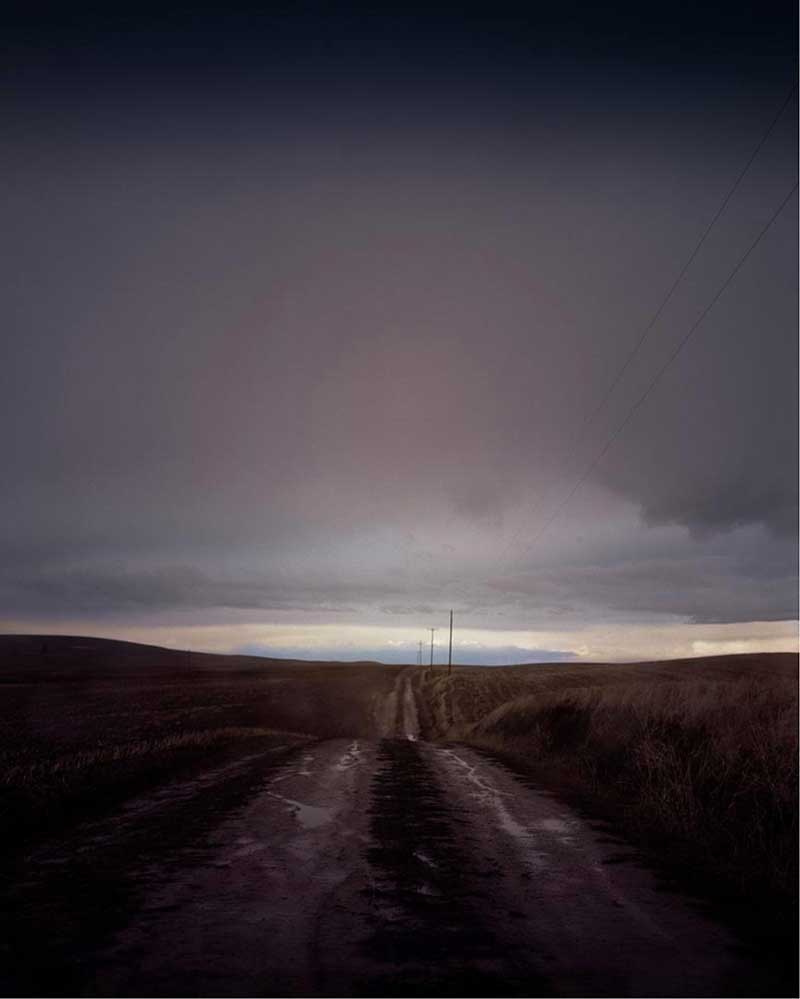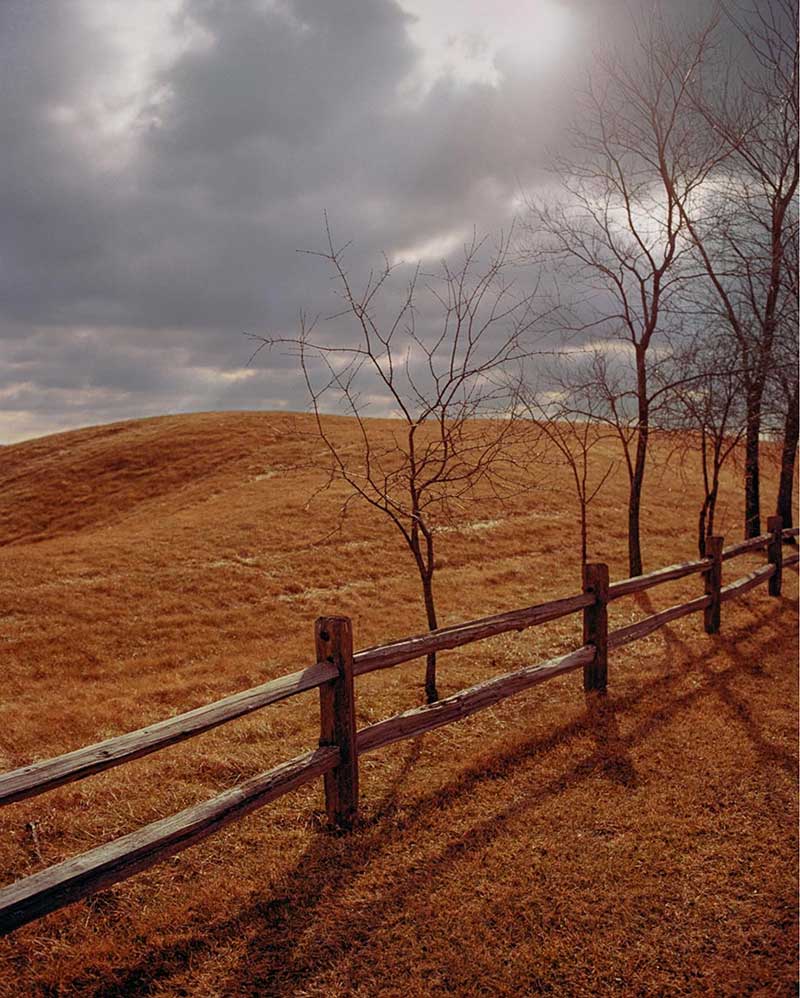In his series Roaming, Todd Hido puts the driveways and cul-de-sacs of suburbia behind him for the open road. The series was compiled from photographs taken over ten years, in day time – another break of habit for the photographer. Hido drove through Washington state, the Californian Central Valley, Indiana, South Louisiana and beyond, photographing the landscapes predominantly through the windshield of his car.
It is not the first time an American photographer has been inspired by the poetic notion of the road trip, it is almost a rite of passage as Hido follows in the tradition of Berenice Abbott, Robert Frank, Lee Friedlander, Joel Sternfeld along with contemporaries such as Alec Soth. This fascination is often sought as a means to capture an innate ‘Americanness’ in the toil of the ploughed fields, in the freedom of the long open road and the very virtue of the journey by car, which is often cited as an American icon.
This quest relates to the very founding of the nation and the popular nineteenth century concept of Manifest Destiny – a loosely conceived but fiercely held belief that White American settlers had a moral duty to expand and then settle the land of North America, to create a great agrarian society. In reality, Manifest Destiny was used to justify the expansion westwards and the clearing of land settled by Native Americans. The photo-essays by Joel Sternfeld and Alec Soth and others of the same tradition can be seen as an exploration of how America came to be, its essence and its history that developed from the 1800s.

#3223, 2003. Todd Hido
Hido’s series directly responds to this tradition, he states, ‘the view I’m photographing doesn’t exist unless you can drive up to it.’ He meditates on the very question of how this essence and instinctive sense of Americanness exists. As with his previous series he is concerned with the psychology of the photographs and the struggle of internal and external forces. In this series Hido emphasises this poetically with tranquil landscapes pictured often through a rain muddled windshield.
He explores how people live, though the photographs are emptied of people, they hold many signs of life. The road itself and the telephone poles that line them, electric wires and fencing and ploughed fields. Hido uses these objects symbolically: the telephone poles suggest a connectivity to the outside world, the furrowed fields a connection rooted to the earth and the fencing a containment of this external world. They do not simply capture a viewpoint, but they create a composition, one which feels nothing other than quintessentially American
(By Alexandra MacKay)
